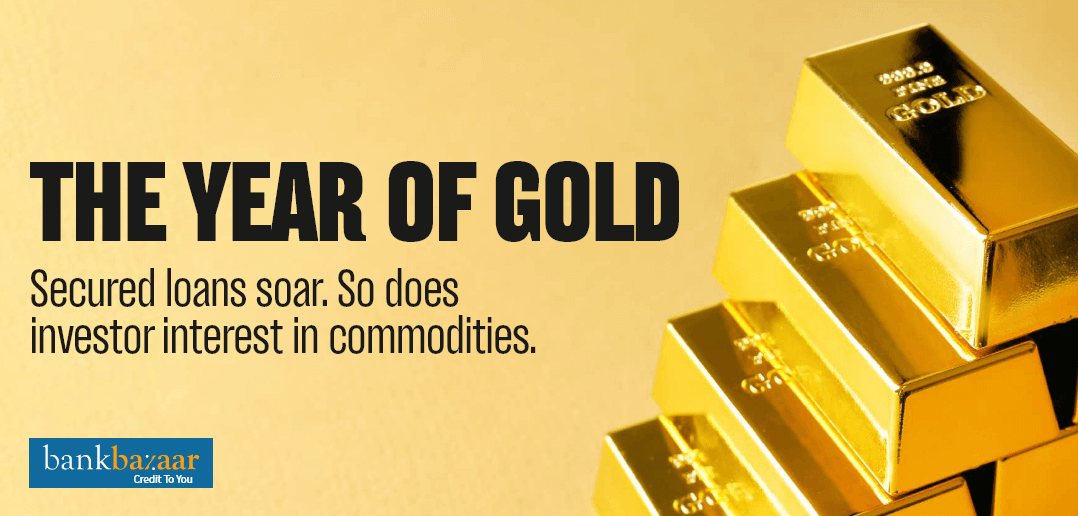Looking for the emerging trends in India’s personal finance market? Here are some key insights from the Moneymood® 2025 report presented by BankBazaar.

BankBazaar.com, an Indian fintech co-brand Credit Card issuer and online financial product marketplace, launched the sixth edition of BankBazaar Moneymood® 2025. This report summarises personal finance trends from 2024 and outlines expectations for 2025.
While we typically focus on Credit Cards, Personal Loans and Home Loans, this year we’ve expanded to broader consumer behaviour trends.
Here are the key trends from 2024.
Year Of Secured Loans
Retail lending grew by 16% to ₹5.2 trillion, slightly slower than last year’s 18%. Secured loans led the way: home loans, the largest retail lending category, rose by 18% (up from 14% last year) and gold loans surged 56%, marking the fastest growth across all categories.
2024 Trends: 2023 saw one of the highest growth in credit and led to a slew of RBI measures to slow down unsecured credit. Unsurprisingly, the pace of credit growth has dipped for everything except home loans, gold loans and secured loans. Home loans grew 18% year on year compared to 14% last year while gold loans grew at a whopping 56%. Loan against securities which had shrunk by 6% last year also grew by 16% year on year.
2025 Expectations: Housing remains the big Indian dream. So, home finance should remain robust especially if interest rates start to drop. The high growth in gold loans signifies an increasing number of people moving away from informal to formal credit. According to a KPMG report, 65% of the gold loan market was unregulated. Against this, banks and NBFCs have increased their market share. There is also a significant transfer from unsecured personal loans to gold loans. We believe this rapid growth in gold loans is a reflection of the scaling from both these segments.
Additional Reading: BankBazaar Aspiration Index 2024
Credit Cards Break Records
Outstanding cards reached 106 million, with monthly spends touching ₹2 trillion. Despite regulatory tightening and rising delinquencies, Credit Card debt grew 17% (vs 28% last year). With less than 6% of Indians owning a card, this underpenetrated segment remains poised for strong growth.
2024 Trends: Credit Card spends had another big year with 17% growth, despite regulatory pressures. Fuelled by no-cost EMIs, cashback offers and festive shopping, monthly spends hit ₹2 trillion. RBI regulations on transparency in charges created awareness but reduced issuer profits. Late payments surged, raising concerns over Credit Card debt. Tier-2 cities witnessed increased adoption.
2025 Trends: Delinquencies notwithstanding, Credit Card usage is expected to keep growing at a double-digit rate as e-commerce and digital payments expand. Issuers will focus on customisation, offering tailored rewards for specific demographics. Penetration in Tier-3 cities will increase and smaller transactions, driven by fintech innovations.
The Home Loan Market
2024 Trends: Home loans had a strong year with 18% growth as inflation cooled and interest rates plateaued. Loan ticket sizes rose as premium housing saw higher uptake. PMAY kept rural and semi-urban demand steady. Developers offered attractive financing schemes. Property prices stabilised in key markets, making home ownership appealing. Urbanisation and improved infrastructure in Tier-2 cities further expanded housing finance demand.
2025 Expectations: With interest rates expected to cool off, housing affordability will improve. This will drive demand for mid-range and premium homes. Urbanisation and governmentbacked affordable housing schemes will keep rural and Tier-2 market demand healthy. Banks and NBFCs will compete aggressively to finance salaried professionals. Property prices might increase as demand surges, particularly in urban centres. Regulatory pressures may persist.
Personal And Auto Loans Slow Down
Unsecured credit faced challenges, especially small-ticket loans under ₹50,000 to sub-prime borrowers. However, larger loans to prime and super-prime borrowers continued to grow and are expected to perform well in coming years.
SIPs > FDs
The gap favouring SIPs over FDs among salaried Indians widened to 5%, the highest on record. SIPs offer better returns, flexibility, and liquidity, while we observed a declining preference for life insurance, postal schemes, crypto, and even direct equity investments.
Amid global trade tensions and inflationary concerns, gold proved its resilience with a 23.34% return, outperforming many traditional investments. The precious metal’s enduring appeal continues to anchor it as a safe haven during economic uncertainties.
Coverage Declines
Although more Indians reported health coverage, there was a dip in those with both life and health insurance. Alarmingly, the proportion of respondents without any coverage nearly doubled.
Retirement Planning
More people are saving for retirement than 2023. Two out of three said they are on track to hit their goal.
Additional Reading: Existential Crisis: Can You Afford Both Avocado Toast and Retirement?
What To Expect In 2025
Home Loans: With interest rates likely to cool, housing finance is expected to remain robust, particularly in urban centers and Tier-2 cities.
Credit Card Growth: Customisation and fintech innovations will drive penetration in Tier-3 cities, despite challenges like delinquencies.
Gold Loans: As formal credit overtakes informal systems, the trend of using gold as collateral will persist.
Investments: SIPs are set to dominate, but the resurgence of crypto and commodities could diversify portfolios.
The Faces Behind The Numbers
The report’s insights are drawn from 1,529 respondents across 6 Indian metros and 18+ Tier-2 cities, primarily salaried professionals aged 22-45. This demographic’s digital awareness and financial preferences shape the evolving landscape of personal finance in India.
We hope you find this year’s report insightful. From all of us at BankBazaar, we wish you a prosperous 2025.